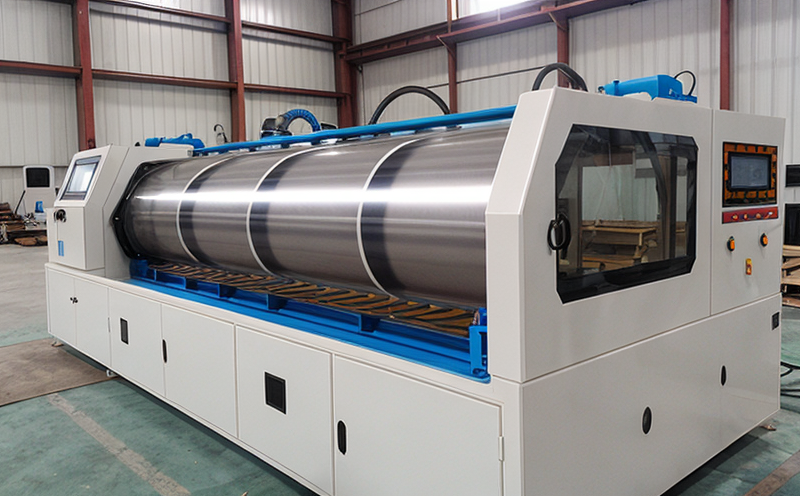Peel adhesion strength test of bonded fabrics
The peel adhesion strength test is an essential procedure used to evaluate the cohesive and adhesive properties of bonded fabrics. This test measures the force required to separate two bonded layers, typically a fabric and its coating or backing material, under specified conditions.
This type of testing is crucial for ensuring the durability and longevity of products such as textiles used in automotive interiors, outdoor gear, and medical devices. The peel adhesion strength test helps manufacturers identify potential weaknesses in their materials and processes early in the development stage, thereby improving product quality and reliability.
The test involves bonding two layers together according to standard procedures, ensuring that the bond is uniform across all samples. After a specified curing period, specimens are then cut into specific shapes (e.g., dogbone-shaped samples) for accurate measurement of peel adhesion strength. The test can be conducted in various environments and temperatures depending on the product's intended use.
During the test, a sample is placed in a fixture within a testing machine designed specifically for this type of stress testing. One layer remains fixed while the other is pulled away at a controlled rate using an adjustable speed motor. The force required to separate the layers is measured by sensors and recorded as peel adhesion strength.
International standards such as ISO 17867, ASTM D3359, and EN 20604 provide guidelines for conducting these tests accurately. Compliance with these standards ensures that results are reproducible and comparable across different laboratories worldwide. The test is widely accepted in the textile industry to ensure product integrity.
For accurate testing, it’s important to consider factors like temperature, humidity, and aging time. These variables can significantly impact peel adhesion strength; therefore, they must be carefully controlled during sample preparation and testing.
Understanding the mechanics behind peel adhesion strength is key to optimizing product performance. Factors influencing this property include fiber type, yarn count, fabric construction, adhesive type, curing conditions, and environmental factors like temperature and humidity. By analyzing these variables through rigorous testing, manufacturers can enhance their products' overall quality and meet stringent industry requirements.
The peel adhesion strength test plays a critical role in ensuring that bonded fabrics perform reliably under real-world conditions. It helps identify any potential issues with the bonding process early on, allowing for corrective actions to be taken before mass production begins. This not only improves product quality but also enhances customer satisfaction by delivering products that meet or exceed expectations.
Furthermore, this test is essential in ensuring compliance with various regulations and standards set forth by governing bodies around the world. By adhering to these guidelines, manufacturers can demonstrate their commitment to producing safe, high-quality products while maintaining competitive edge within their market segments.
Customer Impact and Satisfaction
The peel adhesion strength test significantly impacts customer satisfaction by ensuring that bonded fabrics meet or exceed quality expectations. When manufacturers use this testing method, they can identify any weaknesses in the bonding process early on, allowing for timely corrections before production begins.
Customers expect products to perform consistently and reliably under various conditions throughout their lifecycle. By incorporating peel adhesion strength testing into their quality control processes, companies demonstrate a commitment to delivering superior products that meet or exceed customer expectations.
Moreover, compliance with international standards such as ISO 17867, ASTM D3359, and EN 20604 enhances credibility and trustworthiness among customers. Demonstrating adherence to these guidelines shows that the company follows best practices in product development, manufacturing, and quality assurance.
Customers benefit from products made using reliable bonding techniques because they are more durable and less likely to fail prematurely. This leads to increased customer satisfaction and loyalty, as well as positive reviews and recommendations from satisfied customers.
International Acceptance and Recognition
The peel adhesion strength test is widely recognized and accepted in the textile industry due to its relevance across various sectors. This test ensures that bonded fabrics perform reliably under real-world conditions, which is crucial for maintaining product integrity and customer trust.
Compliance with international standards like ISO 17867, ASTM D3359, and EN 20604 adds credibility to the testing results. These guidelines provide clear protocols that ensure consistency in test procedures worldwide. As a result, laboratories following these standards can produce comparable data across different regions, making it easier for companies to compare performance metrics internationally.
The acceptance of this test is particularly important for industries where durability and longevity are critical factors, such as automotive interiors, outdoor gear, and medical devices. In these sectors, ensuring that bonded fabrics adhere properly helps prevent premature failure or degradation of materials over time.
By adhering to recognized standards, manufacturers demonstrate their commitment to producing high-quality products that meet strict industry requirements. This not only enhances credibility but also ensures product consistency across different markets and regions.
Environmental and Sustainability Contributions
- The peel adhesion strength test plays a crucial role in promoting sustainability by helping manufacturers identify areas for improvement in their bonding processes. By ensuring that bonded fabrics adhere properly, companies can reduce waste during production while maintaining product quality.
- Accurate testing also supports sustainable practices by enabling manufacturers to optimize their materials and processes, leading to more efficient use of resources and reduced environmental impact.





